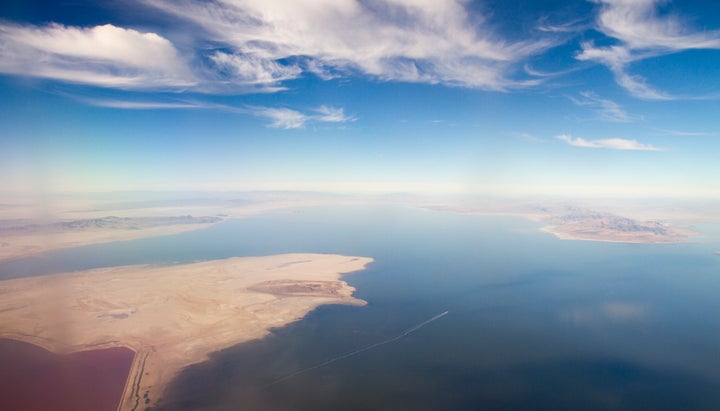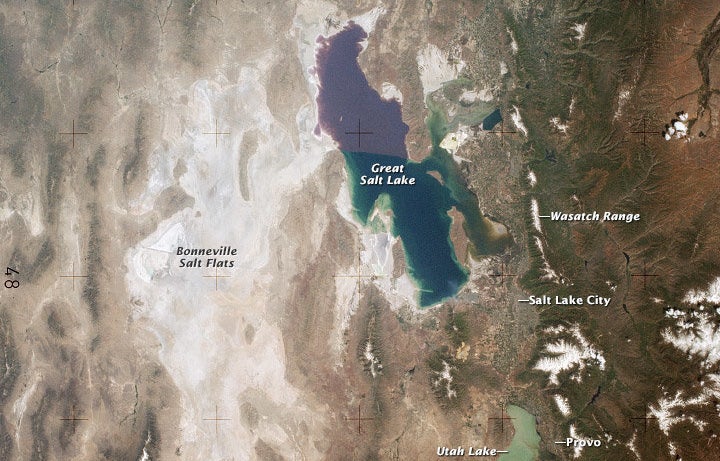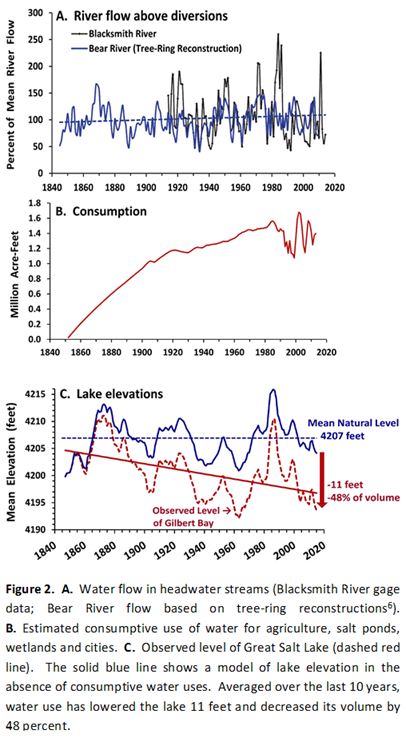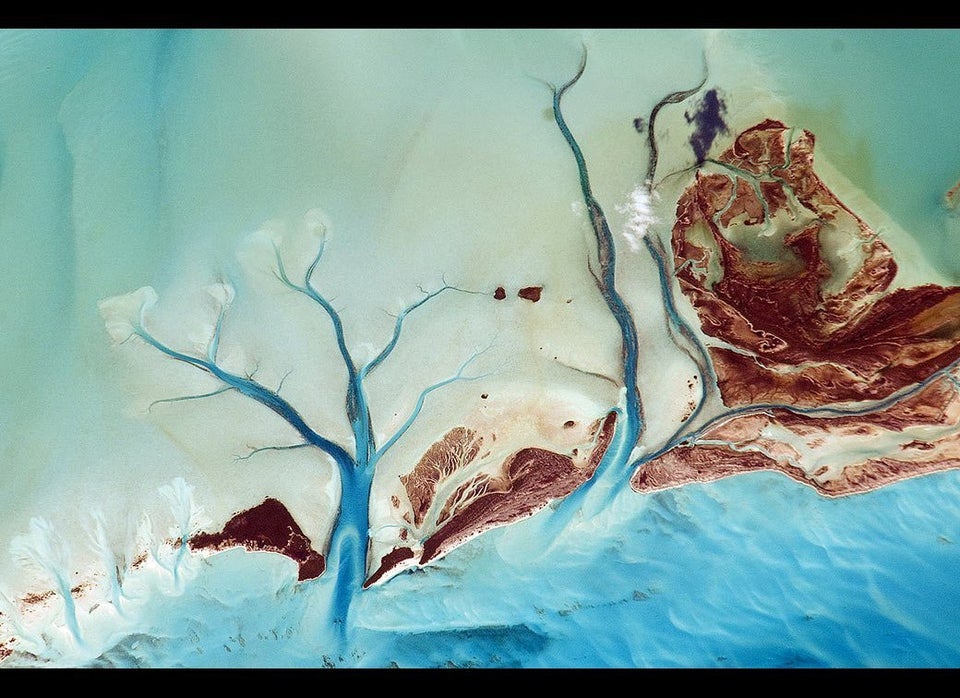
The largest saltwater lake in North America is dwindling in size, and scientists are saying it's our fault.
A team of researchers in Utah recently wrote a paper detailing how the Great Salt Lake has been slowly drying up for the past century and a half. Now, the 75-mile-long and 35-mile-wide lake has such low water levels that most sailboats have been pulled from its marina and stored in a parking lot.
The lake is about half the size it should be because people have redirected some of the rivers and streams that feed into it so they can use that water for themselves, Dr. Wayne Wurtsbaugh, professor in Utah State University's Department of Watershed Sciences and lead author of the paper, told The Huffington Post.
Three major rivers -- the Bear, Weber and Jordan -- feed into the lake.
"We estimate that the lake is 11 feet lower than its natural level because of water diversions from the rivers and the subsequent use of that water for agriculture, industry and urban uses," Wurtsbaugh said. "We have also been in a drought for several years, which has lowered the lake an additional 3 feet, so overall we think the lake is currently about 14 feet below its natural average level."

For the paper, which was published on Feb. 24, the researchers examined how the diversions of water sources feeding into the lake and water consumption near the lake have changed since the 1840s. They also examined how the average elevation of the lake has fluctuated since the 19th century.
They used their data (below) to build a virtual model of the lake that simulated how it would look without human interference.

"Haven’t you always wondered what the lake would be like without humans here?" Craig Miller, an engineer with the Utah Division of Water Resources and a co-author of the paper, said to Utah Public Radio. "This was a really fun project because it answered a lot of questions I’ve always had."
The conclusion was that human water use has decreased both the elevation and volume of the lake. Scientists warned that manipulating the lake's water supply any further will cause the lake to diminish even more.
"Loss of water in the lake threatens its unique ecology, along with the wildlife and industries that depend on the lake’s ecosystem services," Wurtsbaugh said in a statement. "Further, lowering lake levels increase dust pollution, which worsens the health effects of the Salt Lake City area’s already serious air pollution problems."
It's unlikely that the lake could vanish completely, but the researchers noted that it's difficult to predict the drying rate since it's unclear how much more water people might take from its tributaries in the future.
For instance, Wurtsbaugh told HuffPost that the Utah legislature is currently debating a bill that would divert more water from the Bear River, which is the lake's largest tributary.
"Additional water development in the future could deplete it more," he said. "The lake has already been lowered significantly by water diversions, so we want legislators and the public to be aware that each additional water development project will lower the lake still lower."

